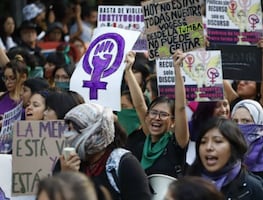Más Información

Secretaria de las Mujeres busca disminuir feminicidios con promotoras de derechos; creará línea para atención a víctimas

Diputada María Teresa Ealy Díaz promueve unidad y tradición en la CDMX; celebra Día de Reyes en la MH

Comisión de Defensa en San Lázaro avala reforma sobre ascensos para médicos militares; busca incentivar especialización

Buscan vinculación a proceso de hotelero por fraude en Baja California Sur; afectados fueron secuestrados al exigir pago

Senado alista mecanismo para garantizar elección judicial tras suspensión del Comité del PJF; Noroña acusa sabotaje
Photographer César Mendiburi used a drone to take a photo of the Kukulkán Pyramid in Chichén Itzá , which has sparked a debate and over which he will be fined by the National Institute of Anthropology and History ( INAH ) given that the image was taken without authorization.
According to the Institute, any kind of photograph or video taken with special or professional equipment is regulated by three laws: the General Law on National Property, the Federal Law on Artistic Monuments, and the Federal Law on Fees.
The photographer violated the General Law on National Property, pursuant to which all archeological sites and historic and artistic monuments are property of the Federation and subjected to this Law and the Federal Law on Monuments and Archeological, Artistic, and Historic Sites.
In Section 17 of the latter, it is stated that for the reproduction of monuments for commercial purposes , the approval of the Institute having jurisdiction (the National Institute of Fine Arts in the case of artistic monuments, the INAH for archeological and historical buildings or sites) shall be required.
The only exception to the rule is hand-crafted reproduction , which is “subjected to that set forth by the corresponding Law; or otherwise, by the Regulations established in this Law.”
The Institution has pointed out the process to gain such approval from the INAH can be done through their website ( www.tramites.inah.gob.mx ) which also shows the requirements needed for the approval and payment methods.
According to the website, it is stated that in case of a video, MXN$ 10, 227 (USD$ 536 approx.) will be paid per day of recording; while the cost per photograph is MXN$ 5,113 (USD$ 268, approx.) The fees are established pursuant the Federal Law on Fees, section 288 D.
am





